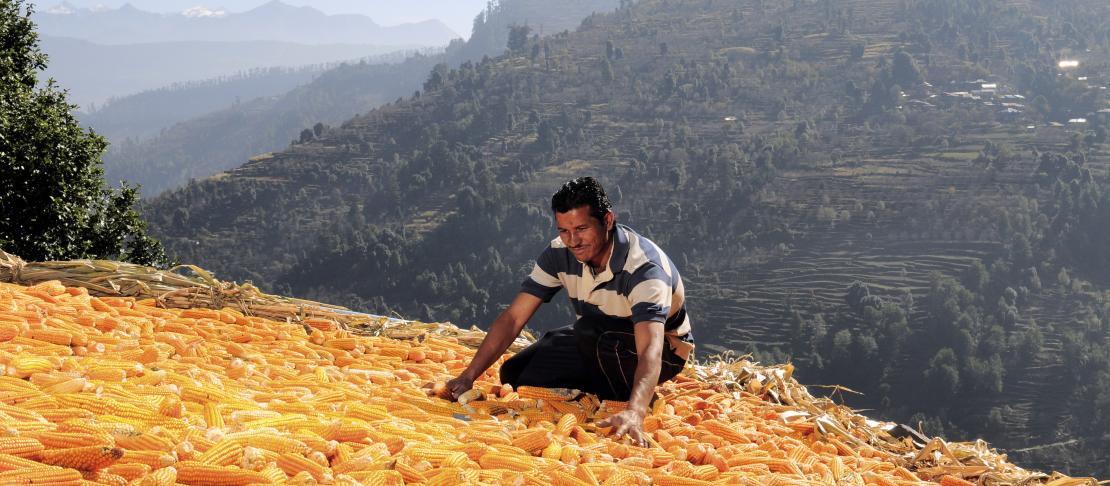New toolkit on climate-smart agriculture can help policymakers make better decisions

A prioritisation toolkit around climate-smart agriculture could arm policymakers with the information that they need to choose the best climate-smart interventions in the short, medium and long term under varying climate scenarios
Imagine you are a policymaker and have to decide on the most appropriate climate smart interventions for your region. What kind of information would help you make this decision?
As we know, climate-smart agriculture is a package of interventions best suited to a specific local context to make farmers resilient to climate change and extreme weather events. Each one of these interventions has varying costs and benefits based on a variety of factors.
But identifying which interventions to choose, from a portfolio that includes weather insurance, groundwater management, inter-cropping and community-managed seed banks, among many others, requires time and careful analysis by policymakers.
A toolkit that can generate this information for policymakers will substantially increase their ability to make better decisions, even under existing and future uncertainties.
The need for decision support tools
The guidelines on National Adaptation Programmes of Action (NAPA) and National Adaptation Plans (NAP) emphasise the importance of these decision-support tools in locating vulnerability to climate-change and in targeting adaptation strategies.
Recognising this demand, a Climate-Smart Agriculture Prioritisation Toolkit is being developed and tested by the CCAFS South Asia team together with colleagues from the International Food Policy Research Institute (IFPRI) in New Delhi, India.
The outline of the climate-smart farming toolkit was presented by the team at the CCAFS-led workshop on Policies and Institutions to Scale out Climate Smart Agriculture, in Colombo, Sri Lanka at the beginning of December this year.
View presentation on the climate-smart agriculture toolkit:
The what, which, where and when?
To begin with, the prioritization toolkit develops a detailed dataset that consists of location-specific data on soil, crop varieties, areas planted, agronomic practices, irrigation and historical weather information along with socio-economic data. This specific toolkit was developed for Bihar in India.
This database is then set within a spatially-explicit modelling framework that is capable of handling a wide range of constraints and scenarios. Future crop yields, water-use and emissions are then forecast for different climate-scenarios using crop-modelling techniques and empirical evidence.
Importantly, the toolkit allows the user to identify robust decisions, that is, the best possible decisions under a set of uncertain circumstances. It is then possible to carry out trade-off analysis of alternative climate smart agriculture development pathways.
Based on the dynamic pathways, the toolkit can support decisions on:
- What crops to cultivate;
- Which climate-smart agricultural technologies and practices to invest in;
- Where to target that investment , and
- When those investments should be made
The toolkit prioritises investment decisions for the short-term (e.g. to 2020), while locating those priorities within a medium- (2050) and long-term (2080) agricultural growth pathway.
Developing a generic tool
Further case studies are targeted for Bangladesh, Nepal and Sri Lanka to demonstrate its potential in supporting national-scale adaptation planning.
Researchers will continue to work on these country-specific case studies to apply the toolkit and develop strategies for sharing scenarios and recommendations with policymakers.
Online links to the climate-smart agriculture prioritization toolkit will be made available after conducting these case studies.
More on climate-smart agriculture on our blog:
- Climate-smart agriculture is improving the lives of millions - here's how
- Which way forward for climate-smart agriculture?
- Can climate-smart agriculture and forests work together at the landscape level?
Learn more about the workshop:
- View all the presentations on our Slideshare account
- View pictures from the workshop on the CCAFS Flickr page
Alex Dunnett is a consultant for CCAFS South Asia, and Paresh Bhaskar Shirsath, is a Spatial Modelling Specialist in CCAFS South Asia. This blog was edited by Dharini Parthasarathy, Communications Specialist, CCAFS South Asia
